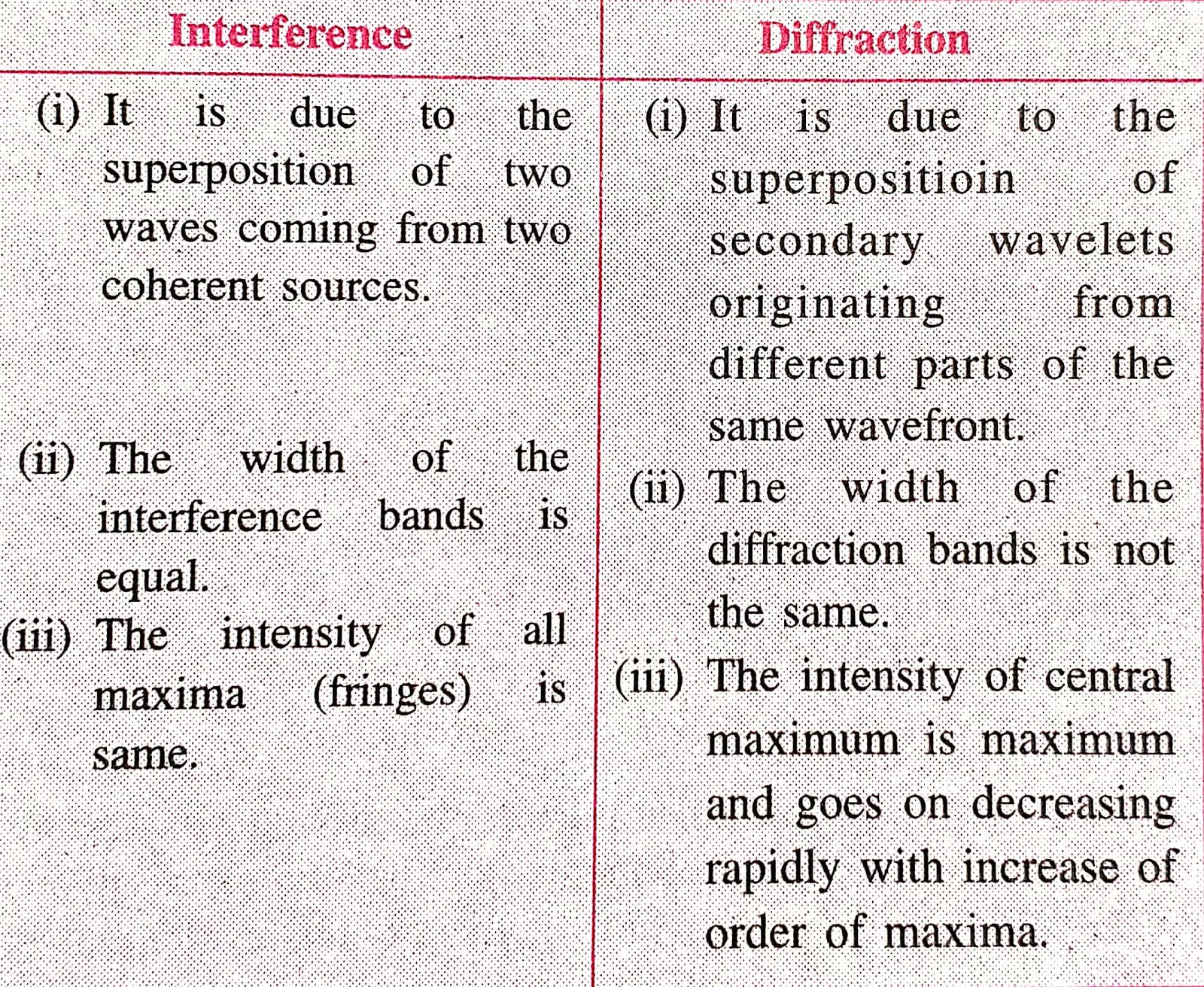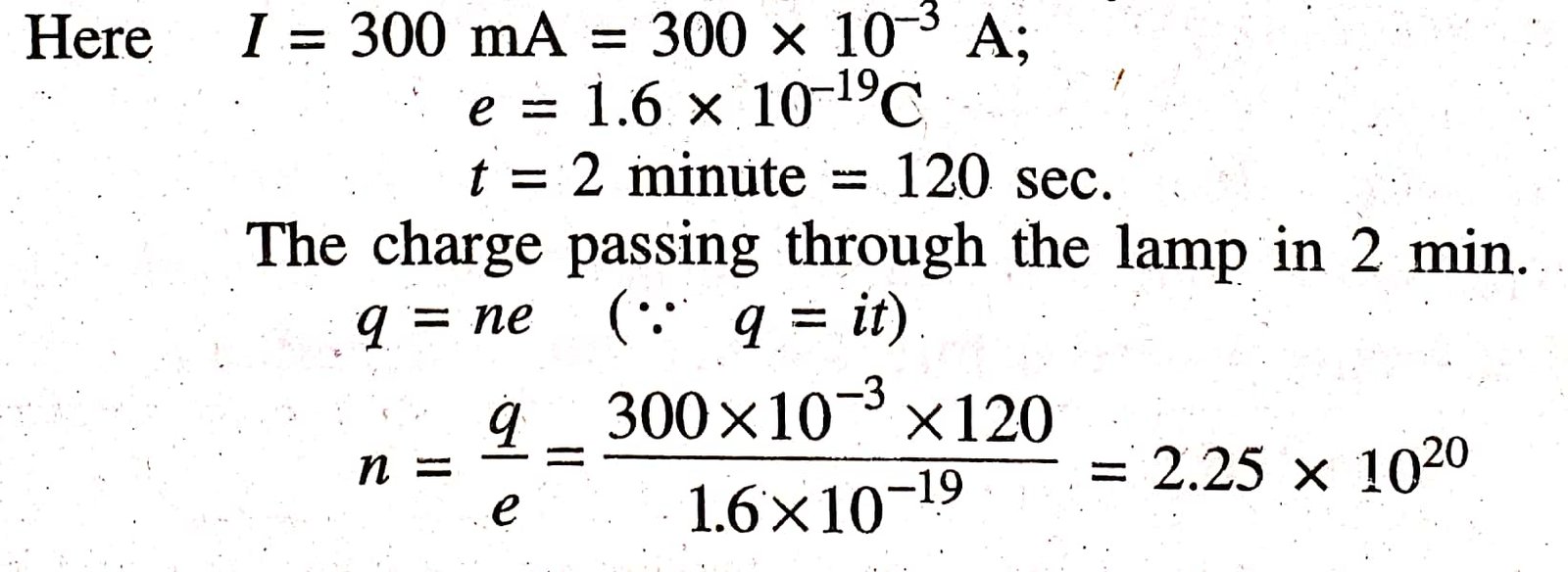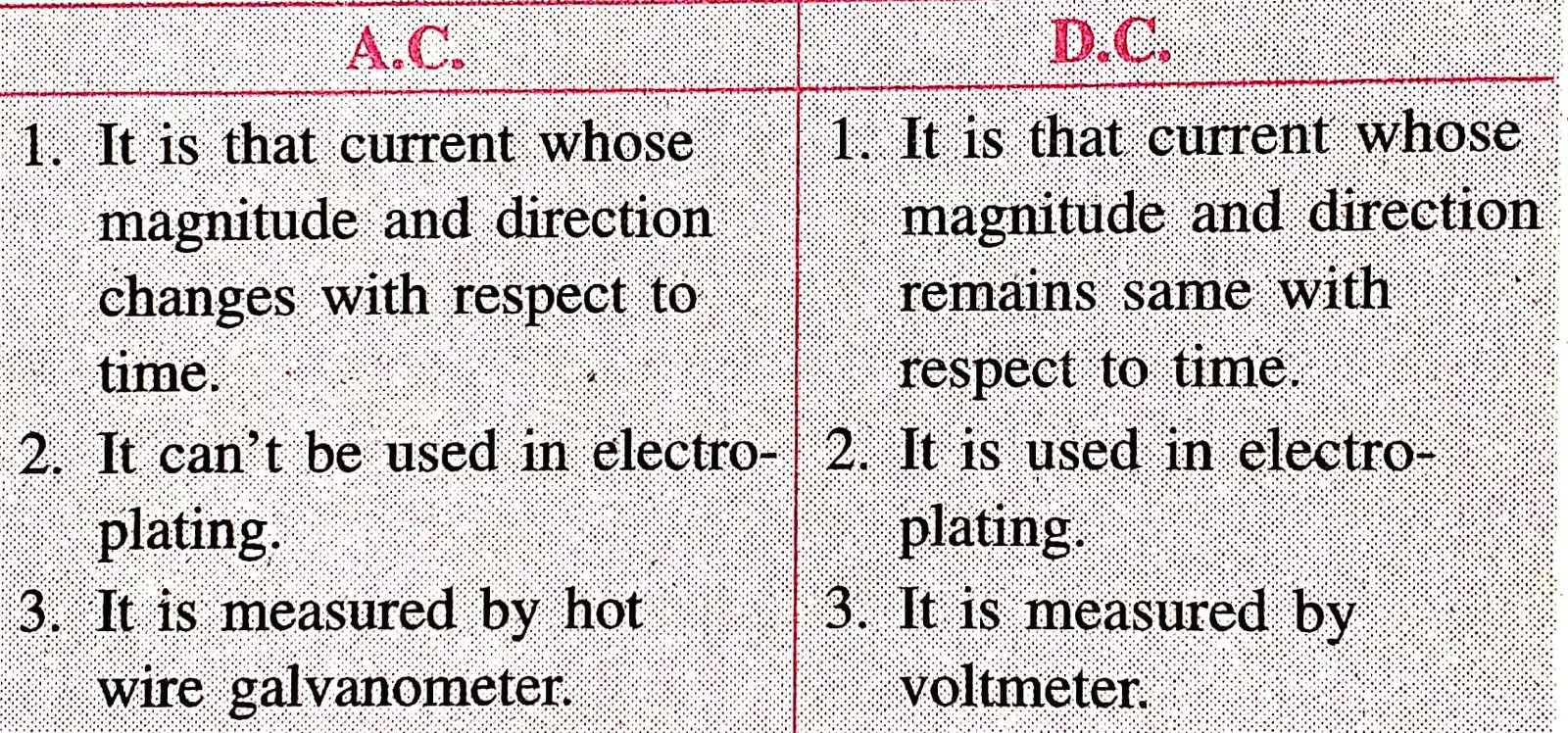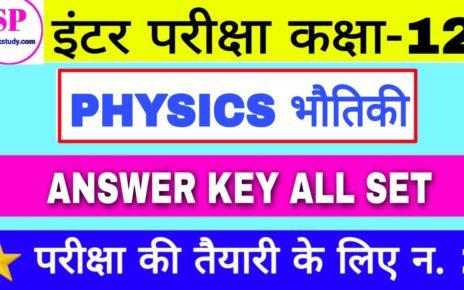12th Board Exam Physics VVI Short Type Question With Answer || BSEB Bihar Board 12th Physics Most Important Guess Short Question Class Notes PDF Download in English
1. What do you understand by dispersion of light?
Ans. When a ray of white light passes through prism is, split up into its constituent colours. This is known as “dispersion of light.”
The constituent colours iše: seven colour may be easily remembered by word “VIBGYOR”. The violet rays are deviated most and the red rays are least. The deviation of the remaining five colours lies between two colours.
2. What do you mean by magnifying power of an instrument?
Ans. The magnifying power of instrument represents the ability of the instrument to show a magnified view of the object to the eye. In case of a telescope the magnifying power is defined as the ratio of the angle subtended by the final image at the eye of the-angle subtended by object in its actual position at the unaided eye.
3. What is light year?
Ans. The distance travelled by light in vacuum in one year is called light year.
Dimension of light year= [L]
The distance travelled in vacuum in in one second= 3 x 108m
∴ one light year = 365 x 24 x 60 x 60 x 3 x 108
= 9.461 x 1015 metre
= 9.461 × 1011 km.
| BSEB 10TH 12TH MODEL SET MOBILE APP | |
| 📍 10TH MODEL PAPER | CLICK HERE |
| 📍 12TH MODEL PAPER | CLICK HERE |
| 📍 OFFICIAL 12TH MODEL SET | CLICK HERE |
4. Define critical angle and write its conditions.
Ans. It is the angle of incidence for which the angle of refraction is 90º, when a ray of light is incident from denser to rater medium.
μ = 1 / sinc
Its conditions are critical angle depend on colour of light.
5. What is doping?
Ans. Doping :- A semiconductor obtained after adding desirable impurity atoms in the intrinsic semiconductor is called extrinsic or deped semiconductor. The process of adding desirable impurities in the intrinsic semiconductor is called doping.
6. Write two differences between electromagnet and permanent magnet.
Ans. The difference between Electro Magnet and Permanent Magnet are as follows:-
Electro Magnet :-
(i) Its shows the properties of Magnet at that time were the current flows on that time is Magnetic properties is end even current is closed.
(ii) When the direction of the current of electro Magnet.is changed then the nature of its axis is also changed.
Permanent Magnet :-
(i) Its exists the Magnetic properties at maximum days.
(ii) The nature of the axis of permanent magnet is fixed and permanent. We can not change this easily.
7. Why is core of transformer laminated?
Ans. Lamination of the transformer core :- The core is laminated to minimize eddy currents produced in it due to charging magnetic flux
8. Write two basic properties of electric charge.
Ans. Electric charges has three basic properties :-
(a) quantisation,
(b) additivity,
(c) conservation
9. Write any two properties of X-rays.
Ans. Some properties of X-rays :-
(i) They can undergo reflection, refraction, interference diffraction and polarisation.
(ii) They effect photo graphic plates.
10. Write Lenz’s of electromagnetic induction.
Ans. Lenz’s law states that the direction of induced curren is such that if opposes the cause which produces it. It is based on the law of conservation of energy.
11. Deline mean value and root mean square value of alternating current.
Ans. In alternating current the magnitude & direction both changes periodically. The current in half cycle is positive and in next halfcycle it is negative so in one complete cycle average value of current is zero. But RMS value of current for one “cycle is not zero. The mean or average of square of current is when taken in square root, it is called RMS value of ac.
12. What is transformer ?
Ans. Transformer:- It is defined as a device which converts : low alternating voltage at high current into high alternating voltage at low current and vice-versa.
The efficiency of good transformer is 99%.
13. What is de-Broglie wave ?
Ans. Louis de Broglie has come across the fact that radiation behave as a particle. He experienced that
(i) Nature lóves symmetry.
(ii) Matter and radiation should be symmetric.
(iii) Since radiation (energy) exhibits particle nature, so should that wave do. That is a particle, like radiation should exhibit dual nature.
14. Explain any two of the following terms.
(i) Ground waves (ii) Sky waves (iii) Space waves
Ans:
(i) Ground waves :- The ground waves which progress along the surface of the earth are called ground waves or surface waves. The ground propagation is suitable for low and medium frequency. i.e., up to 2 MHz only, hence it is also called medium wave propagation. The maximum range of ground or surface. wave propagation depends on:
(a) The frequency of the ratio waves and
(b) Power of the transmitter
(ii) The sky waves :- The sky waves are the radio waves of frequency between 2 MHz to 30 MHz. The ionosphere reflects those radio waves so that they can propagate through atmosphere. The sky wave propagation is also known as – ionosphere propagation.
The sky waves are used for very long distance radio communication at medium high frequencies (i.ei at medium waves and short waves). The radio waves can cover a distance opproximately 400 km in a single reflection from the jonosphere.
(iii) Space wave :- The space waves are the radio waves of very high frequency (i.e. between 30 MHz to 300 MHzor more)The space waves can travel through atmosphere from transmitter antena to receive antena eigther directly or after reflection from ground in the earth’s troposphere region. It is also called Tropospherical propagation or line of sight propagation. This propagation is limited (a) to the line of sight distance (b) by the curvature of the earth. It is utilized in T.V. communication, radar communication, etc.
15. Define electric flux.
Ans. Electric Flux:- Electric Flux through an area is defined as the total number of electric lines of force passing through the area.
SI unit is N × n2/c
16. What is transformer ?
Ans. transformer — It is electrical device which is used to convert alternating current (AC) as high voltage into that at low voltage and vice-versa without changing frequency of A.C. current. It is bases on the principal of electromagnetic induction.
17. Explain what do you understand by binding energy of a nucleus?
Ans. The minimum amount of energy required to seperate the nucleus is called Binding Energy. Binding energy of nucleous be equal to energy equivalence of mass defect of that nucleus.
18. Differentiate between interference and diffraction of light.
19. Define radioactivity and half-life a nuclei.
Ans. Radioactivity :- The phenomenon of emission of invisible radiation from certain elements is called radioactivity.
Half-life period :- Half-life of a radio-active element is the duration of time in which half of the nuclei disintegrated.
👉 BSEB 12TH EXAM ALL SUBJECT 10 MODEL SET PAPER WITH ANSWER
20. Explain Modulation and write types of modulation.
Ans. The mixing up of the original signal with the eletro-magnetic waves (carrier signal) is called modulation. There are three types of modulation.
1. Amplitude modulation
2. Frequency Modulation
3. Phase Modulation
21. Mention some properties of X-rays.
Ans. (i) They can undergo reflection, refraction, interference diffraction and polarisation.
(ii) they affect photo graphic plates.
(iii) They cast shadows of the objects falling in their path
due to the reason that they travel in a straight line.
(iv) They can penetrate the materials that are opaque to visible or UV light.
(v) They can cause photoelectric effect.
(vi) They can cause flourescence in certain materials like zinc sulphide, calcium tungstate etc.
(vii) They ionise the gas through which they pass.
(viii) They produce secondary X-rays when fall on certain metals. They secondary X-rays are accompanied by fast moving electrons.
22. How many electrons pass through the lamp in 2 minutes if the current is 300 mA?
23. Give Difference between A.C. and D.C.
📍 PDF DOWNLOAD THIS QUESTION ON SCREEN CLICK HERE
☘ PDF DOWNLOAD 3 FEBRUARY EXAM 2020 CLICK HERE
👉 PHYSICS CHAPTER WISE VVI OBJECTIVE TYPE QUESTION
👉 CHEMISTRY CHAPTER WISE VVI OBJECTIVE TYPE QUESTION
👉 BIOLOGY CHAPTER WISE VVI OBJECTIVE TYPE QUESTION
👉 MATH CHAPTER WISE VVI OBJECTIVE TYPE QUESTION
👉 HINDI 50 MARKS CHAPTER WISE VVI OBJECTIVE TYPE QUESTION
👉 ENGLISH 50 MARKS CHAPTER WISE VVI OBJECTIVE TYPE QUESTION
👉 ENGLISH 100 MARKS CHAPTER WISE VVI OBJECTIVE TYPE QUESTION





